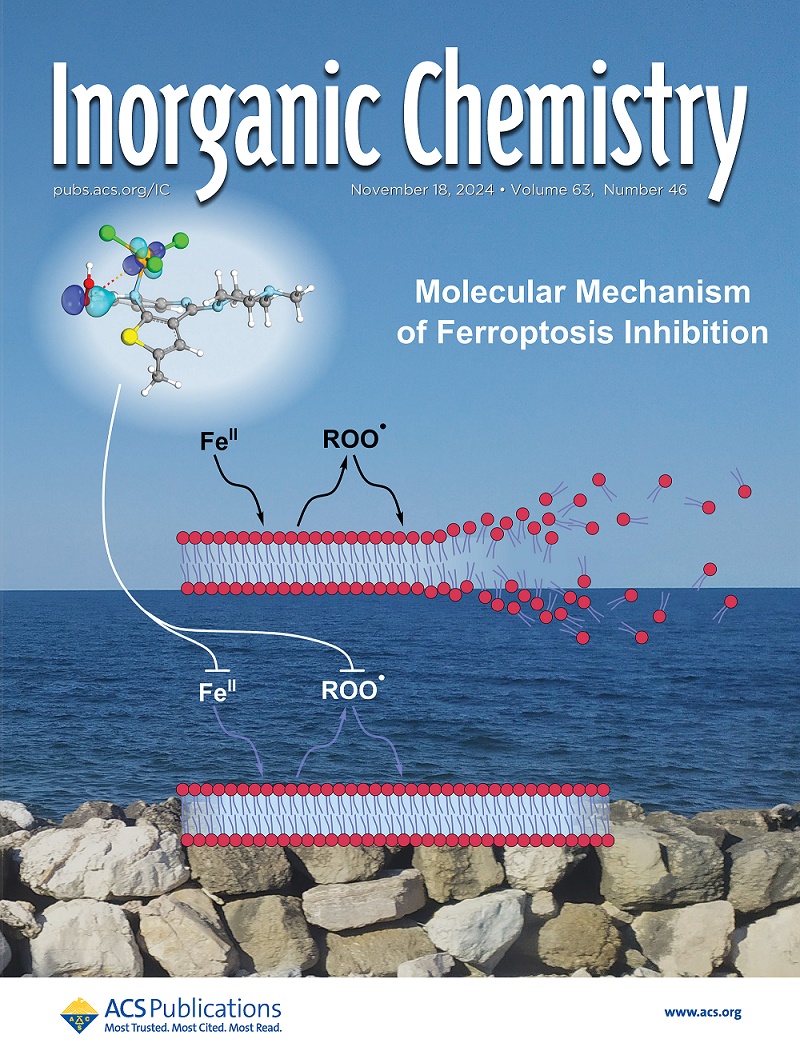Ambient Synthesis for Fe(II) Polypyridyl Complexes with an Order of Magnitude Increase in Charge-Transfer Excited-State Lifetimes over [Fe(bpy)3]2.
IF 4.7
2区 化学
Q1 CHEMISTRY, INORGANIC & NUCLEAR
引用次数: 0
Abstract
Replacing precious metals with abundant metals is an important research focus in photochemical energy conversion and storage to meet global energy demands. However, transition metal complexes (TMCs) based on abundant 3d metals typically possess photochemical disadvantages─such as short charge-transfer excited-state lifetimes─and molecular modifications have focused on optimizing the interplay of structure, dynamics, and energetics to overcome their limitations. One strategy to do so is the use of bespoke ligands that can extend the lifetimes of chemically useful excited states. Here, we report the synthesis and characterization of novel Fe(II) complexes featuring lengthy polypyridyl ligands that can be readily synthesized. Steady-state and transient absorption spectroscopies indicate that these complexes have desirable properties and their excited metal-to-ligand charge-transfer states live an order of magnitude longer than in the benchmark [Fe(bpy)3]2+. This lifetime is largely preserved in the heteroleptic complexes, thereby enabling the preparation of asymmetric complexes. Additionally, we apply nonradiative transition theory to explain the long-time decay kinetics. In light of their ease of preparation and reasonable excited-state lifetimes, we suggest the use of these complexes in Fe(II) dye-sensitized solar cells, where the rate of charge injection would be competitive with increased lifetime.与[Fe(bpy)3]相比,Fe(II)多吡啶配合物的电荷转移激发态寿命增加了一个数量级
以丰富的金属替代贵重金属是满足全球能源需求的光化学能量转换与存储的重要研究热点。然而,基于丰富的三维金属的过渡金属配合物(tmc)通常具有光化学缺点,例如短的电荷转移激发态寿命,并且分子修饰专注于优化结构,动力学和能量学的相互作用以克服其局限性。这样做的一个策略是使用定制的配体,它可以延长化学上有用的激发态的寿命。在这里,我们报道了新型Fe(II)配合物的合成和表征,这些配合物具有易于合成的长聚吡啶基配体。稳态和瞬态吸收光谱表明,这些配合物具有理想的性能,其激发金属到配体的电荷转移态的寿命比基准[Fe(bpy)3]2+长一个数量级。这一寿命在很大程度上保留在异交络合物中,从而使不对称络合物的制备成为可能。此外,我们应用非辐射跃迁理论来解释长时间衰变动力学。鉴于它们易于制备和合理的激发态寿命,我们建议在Fe(II)染料敏化太阳能电池中使用这些配合物,其中电荷注入速率将与增加的寿命相竞争。
本文章由计算机程序翻译,如有差异,请以英文原文为准。
求助全文
约1分钟内获得全文
求助全文
来源期刊

Inorganic Chemistry
化学-无机化学与核化学
CiteScore
7.60
自引率
13.00%
发文量
1960
审稿时长
1.9 months
期刊介绍:
Inorganic Chemistry publishes fundamental studies in all phases of inorganic chemistry. Coverage includes experimental and theoretical reports on quantitative studies of structure and thermodynamics, kinetics, mechanisms of inorganic reactions, bioinorganic chemistry, and relevant aspects of organometallic chemistry, solid-state phenomena, and chemical bonding theory. Emphasis is placed on the synthesis, structure, thermodynamics, reactivity, spectroscopy, and bonding properties of significant new and known compounds.
 求助内容:
求助内容: 应助结果提醒方式:
应助结果提醒方式:


